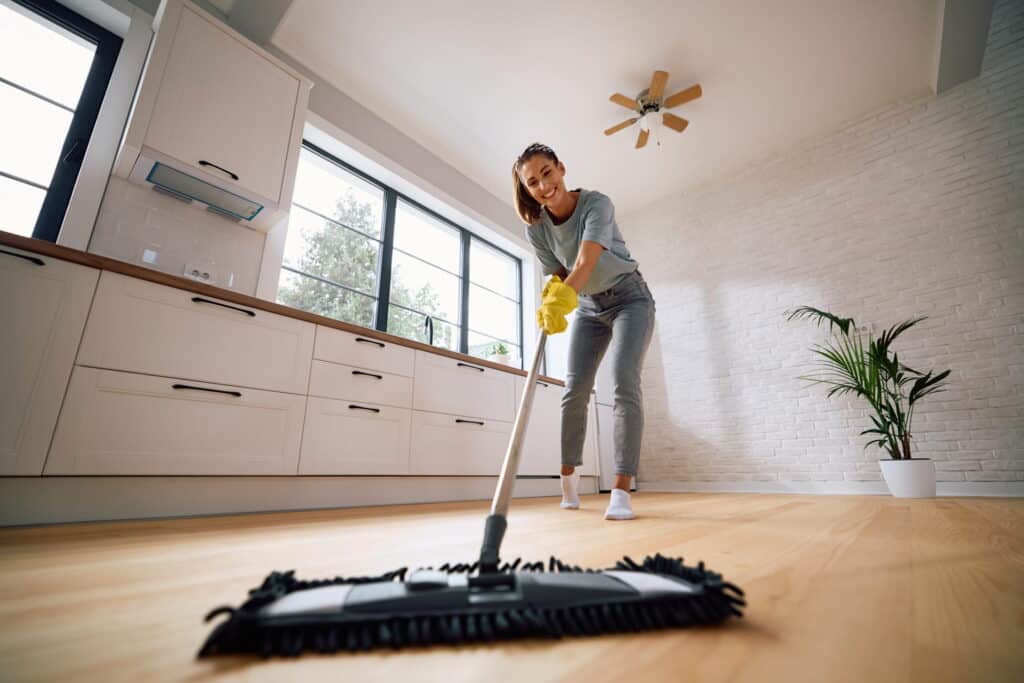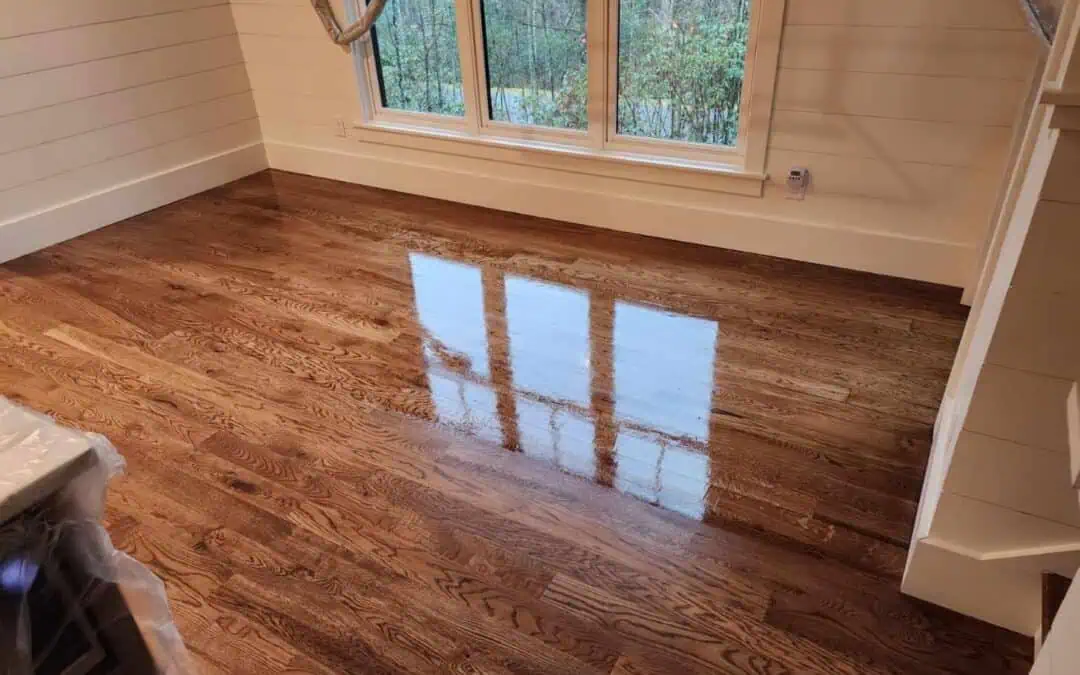Wood floors and engineered flooring both bring warmth, character, and natural texture to a space, but keeping them in good shape takes more than the occasional sweep. The longevity of these surfaces depends on consistent, informed care. While they may appear durable on the surface, improper cleaning can shorten their life span dramatically. This guide unpacks how to clean and maintain wood and engineered flooring using methods that preserve appearance without compromising structure.
Keeping Wood and Engineered Floors Looking Their Best
Someone who’s worked around residential remodels has seen the damage caused by well-meaning cleaning attempts. Over-wet mops, harsh chemicals, even something as basic as ignoring grit near an entryway can leave permanent marks on hardwood or engineered planks. These floors aren’t fragile, but they do require maintenance that respects their layered construction and surface finish. Wood and engineered flooring respond best to cleaning techniques that are thoughtful but not excessive.
-
Always sweep or vacuum before mopping to remove particles that scratch
-
Avoid strong ammonia-based cleaners, which can eat away finishes
-
Don’t let water pool, even for a few minutes
Daily Cleaning Tips for Wood Floors
Daily care helps protect against buildup and surface wear. A soft-bristle broom or a dry microfiber dust mop is usually enough to keep things under control. These tools pick up pet hair, sand, and dust without pushing debris into grooves. Vacuuming with a hard-floor setting helps too, but dragging wheels across soft finishes can be risky if the vacuum isn’t designed for wood.
-
Stick to microfiber for daily dusting
-
Vacuum with caution and use rubber wheels if possible
-
Wipe up tracked-in dirt from shoes or pets immediately
Engineered Wood Floor Maintenance Guide
Engineered wood behaves differently from solid hardwood. It’s built in layers, with a veneer on top, and often a high-density core underneath. That means some finishes can’t be sanded more than once or twice, depending on thickness. Maintenance needs to focus on preserving that top layer. Dry mops and low-moisture techniques are safer than anything that introduces too much liquid.
-
Choose pH-balanced cleaners specifically labeled for engineered flooring
-
Limit wet cleaning to once per week in high-traffic zones
-
Inspect high-use areas quarterly for early signs of wear
What to Avoid on Wood Surfaces
Plenty of cleaning advice floats around that does more harm than good. Vinegar, for example, can dull wood finishes over time and create a cloudy look. Bleach is another frequent offender that breaks down the protective seal. Steam mops seem convenient, but high temperatures and moisture levels risk warping boards or softening adhesives beneath engineered layers.
-
Avoid vinegar, bleach, or oil soap-based products
-
Skip steam mops even on sealed flooring
-
Use clean, damp cloths sparingly and always dry afterward
Best Cleaners for Engineered Flooring
Safe options are widely available, but it’s easy to buy something harsh by accident. Look for water-based cleaning formulas made for engineered floors, ideally those certified by the EPA’s Safer Choice program or labeled no-residue. DIY mixes using warm water and a tiny splash of unscented dish soap work in a pinch, but always wring out mops thoroughly.
-
Bona Hardwood Floor Cleaner and Black Diamond Wood & Laminate are reliable choices
-
EPA’s Safer Choice site lists approved low-toxicity products
-
Test new cleaners in a corner before using on the entire floor

Removing Stains from Wood Flooring
Accidents happen. Whether it’s a red wine spill, muddy footprints, or ink marks, acting fast makes all the difference. Blot liquids—never scrub—then use a cleaner safe for your finish type. Some stains settle into grooves and may need a soft-bristled toothbrush and diluted soap to lift them out. Always let the floor dry completely to avoid swelling.
-
Use baking soda paste for surface scuffs
-
Mineral spirits can remove sticky residue but test in an inconspicuous area first
-
Never use steel wool or abrasive pads
Long Term Care for Engineered Floors
Time takes a toll on all floors, but how you treat them in between makes a difference. Preventive care—rather than reactive repairs—keeps engineered flooring looking fresh. Dry air in winter can shrink planks, while humid summers may cause expansion, so monitoring room conditions plays a quiet but essential role in longevity.
-
Keep humidity between 35% and 55% using a humidifier or dehumidifier
-
Schedule refinishing only when the wear layer allows it, usually 1–3 times over the floor’s life
-
Rotate rugs and rearrange furniture to even out wear patterns
Preventing Scratches and Wear Patterns
Scratches develop slowly, often beginning with simple friction: a chair leg, a bit of gravel stuck in a boot, pet claws. Over time, these small marks become visual grooves. High-traffic paths benefit from area rugs or runners that reduce direct contact. Placing protective pads under furniture also cuts down on friction-related damage.
-
Use felt pads under all table and chair legs
-
Take off shoes indoors, especially heels or cleats
-
Clip pet nails monthly to reduce micro-scratches
Seasonal Floor Maintenance Checklist
Each season presents new challenges. In winter, salt and grit stick to boots. Spring brings mud and rain. Summer heat causes boards to expand, while fall tends to bring leaves and fine dust indoors. Adjusting routines to each season prevents unnecessary damage and keeps the surface looking polished.
-
Use entryway mats during wet or icy months
-
Deep clean at the start of spring and fall
-
Check for warping or gaps every season
Professional Cleaning or DIY?
Knowing when to call in a floor care specialist makes a big difference. DIY methods work well for ongoing maintenance, but once deep scratches or cloudy buildup settle in, a professional cleaning might restore things faster—and more safely. Some engineered floors should never be buffed or sanded at home because of their thin top layer.
-
Professionals can perform low-impact deep cleaning without damage
-
DIY works for surface-level dirt and minor marks
-
Sanding engineered floors without knowing the veneer thickness risks permanent damage

Key Takeaways for How to Clean & Maintain Wood and Engineered Flooring
-
Clean floors with pH-neutral, water-based cleaners designed for wood
-
Avoid steam, vinegar, bleach, and heavy water saturation
-
Monitor humidity to prevent warping or cracking
-
Use rugs and pads to reduce wear in high-traffic areas
-
Choose the right methods based on whether floors are solid or engineered
FAQs About Wood and Engineered Floor Maintenance
Can vinegar be used on wood floors?
While often suggested, vinegar is acidic and can dull the finish. Over time, it breaks down surface coatings and leads to a cloudy appearance.
How often should engineered wood floors be mopped?
Stick to once per week or less for mopping, using a damp (not wet) mop. Dry cleaning methods like dust mopping are better for daily care.
What humidity level is ideal for wood floors?
The National Wood Flooring Association recommends maintaining humidity between 35% and 55% year-round. This helps prevent shrinking, warping, and cracking.
Can scratches be repaired without refinishing?
Minor scratches can often be treated with stain markers or wax repair kits. Deep gouges may require a full panel replacement or professional attention.
Is it safe to use a steam mop on engineered flooring?
No. Steam introduces too much moisture and heat, which can damage the layered construction and adhesives. Stick to dry or lightly damp cleaning methods.

